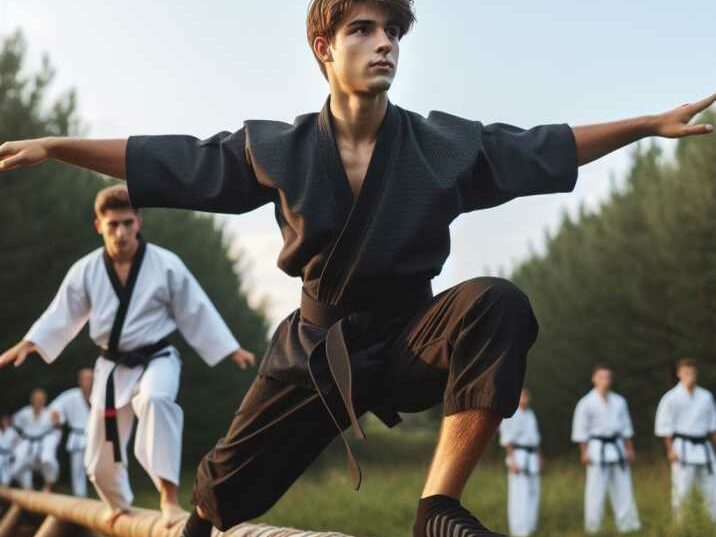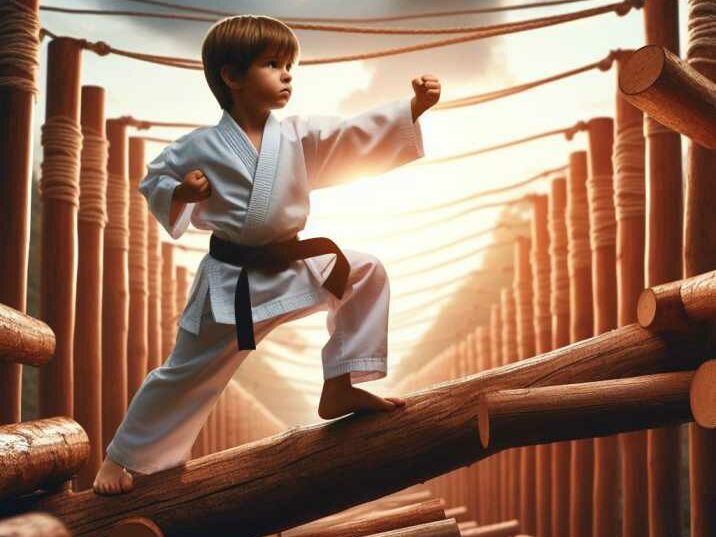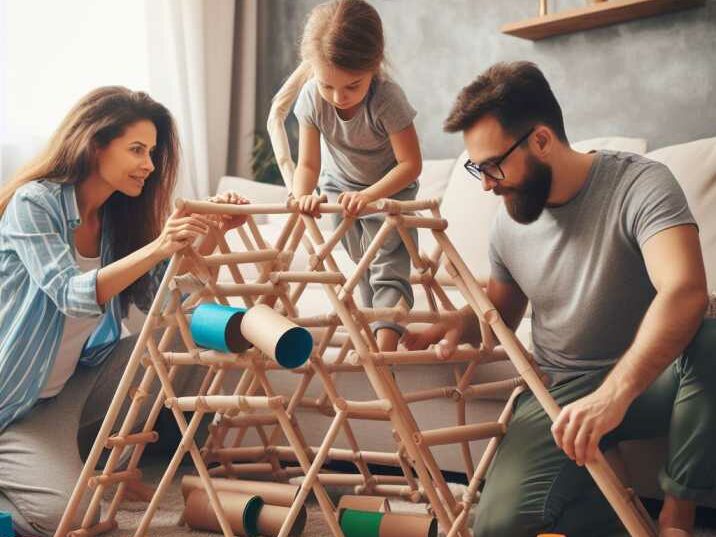Obstacle Courses in Kids Martial Arts Training
Table of Contents
Introduction:
Welcome to the world of excitement, where obstacle courses meet the precision of kids’ martial arts. In this blog post, we will delve into the joyous fusion of physical activity, discipline, and fun that obstacle courses bring to young martial artists. Join us on a journey to understand the importance, benefits, and techniques behind these engaging activities, tailored for the average 11-year-old mind.
The Excitement of Obstacle Courses for Kids
Obstacle courses are not just a series of challenges; they’re a gateway to adventure for young martial artists. The integration of these courses into kids’ martial arts training not only adds an element of fun but also cultivates valuable skills. From balance beams to crawling tunnels, each obstacle serves a purpose in enhancing physical fitness, coordination, and mental focus.
Precision in Kids Martial Arts: A Balancing Act
Balancing Techniques for Young Warriors
To excel in martial arts, children need to master the art of precision. Balance is a fundamental skill that lays the foundation for their journey. By incorporating balancing obstacles into the training routine, kids develop a sense of equilibrium and body control. Walking across narrow beams or jumping over hurdles enhances their ability to maintain focus while executing precise movements.

The Symbiosis: Obstacle Courses and Martial Arts Forms
Kata Patterns: A Dance of Discipline
One of the beautiful aspects of martial arts is the performance of kata, a choreographed sequence of movements. Obstacle courses provide an interactive platform for kids to apply their kata patterns in a dynamic environment. Navigating through obstacles requires not only physical prowess but also mental clarity – an essential component of mastering martial arts forms.
Benefits Beyond the Mat: Life Skills for Young Minds
Discipline in Diversity
Beyond the physical benefits, obstacle courses instill discipline in young martial artists. Facing diverse challenges teaches them adaptability and perseverance. Each obstacle becomes a metaphor for life’s hurdles, teaching kids that overcoming difficulties is a part of the journey, both on and off the mat.

The Role of Precision in Achieving Goals
Setting Targets and Breaking Boards
Precision in kids martial arts extends beyond the physical realm. Setting goals and working towards them with precision is a valuable lesson ingrained through martial arts training. Breaking boards becomes not just a demonstration of strength but a celebration of achieving a goal with focus and accuracy.
Transitioning to Success: The Importance of Consistency
Consistency: The Silent Key to Mastery
Consistency is the bridge that connects training to success. Whether navigating an obstacle course or perfecting a martial arts technique, the path to mastery lies in consistent effort. Transitioning from one challenge to the next becomes smoother when consistency is at the core of the training regimen.
Passive Voice: A Learning Experience for Young Minds
Passive voice, when used sparingly, adds a layer of complexity to the narrative without overwhelming young readers. Phrases like “The obstacle course was designed to enhance agility” shift the focus from the doer to the action, encouraging readers to think beyond the surface.
A Glimpse into Obstacle Course Designs for Kids
Creating an Adventure: The Art of Design
Obstacle courses for kids are not just random challenges thrown together. Each element is carefully designed to cater to the physical abilities and cognitive development of young martial artists. From colorful mats to themed obstacles, the environment is crafted to be both safe and stimulating.
The Adventure Continues: Incorporating Obstacle Courses at Home
DIY Obstacle Courses: A Family Affair
The fun doesn’t end at the dojo; it can continue at home. Designing simple obstacle courses with household items not only keeps kids active but also turns physical activity into a family affair. Parents become the architects, and children, the fearless adventurers.

Conclusion:
In the world of kids martial arts, obstacle courses stand out as a beacon of excitement and skill development. The art of precision, seamlessly integrated into these adventures, shapes young minds into disciplined and focused martial artists. As we embrace the joyous fusion of obstacle courses and martial arts, let’s empower the next generation with the tools they need to navigate both physical and metaphorical obstacles on their journey to success.
Frequently Asked Questions (FAQs)
- Q: Why are obstacle courses beneficial for kids in martial arts?
- A: Obstacle courses enhance physical fitness, coordination, and mental focus while adding an element of fun to martial arts training for children.
- Q: How do obstacle courses contribute to the precision required in martial arts?
- A: The challenges presented in obstacle courses require precise movements, improving a child’s ability to execute techniques with accuracy and focus.
- Q: Are obstacle courses suitable for all age groups in kids martial arts?
- A: Yes, obstacle courses can be adapted to different age groups, ensuring that challenges align with the developmental stage of each child.
- Q: What role do balancing techniques play in kids martial arts?
- A: Balancing techniques, often integrated into obstacle courses, are crucial for building a foundation of body control and equilibrium in young martial artists.
- Q: Can obstacle courses be replicated at home for additional practice?
- A: Absolutely! DIY obstacle courses with household items provide a creative and family-friendly way to continue the martial arts adventure at home.
- Q: How do parents benefit from participating in obstacle courses with their children?
- A: Parents engaging in obstacle courses at home create a bonding experience, fostering a supportive environment for the child’s physical and emotional growth.
- Q: Are there specific safety measures to consider when designing obstacle courses for kids?
- A: Yes, safety is paramount. Designing age-appropriate courses, using proper padding, and closely supervising children during activities are essential precautions.
- Q: How often should kids engage in obstacle courses as part of their martial arts training?
- A: The frequency of obstacle courses can vary, but incorporating them into regular training sessions, perhaps once a week, ensures a balanced and enjoyable routine.
- Q: Can obstacle courses help children develop resilience and perseverance?
- A: Certainly. Overcoming challenges in obstacle courses teaches kids resilience and the importance of persevering through difficulties, valuable life skills.
- Q: Are there specific benefits for children with attention-related challenges in obstacle course participation?
- A: Yes, the dynamic nature of obstacle courses can be particularly beneficial for children with attention challenges, as it helps improve focus and concentration.
- Q: How do obstacle courses complement traditional martial arts forms like kata?
- A: Obstacle courses provide a practical application for traditional forms, allowing kids to apply their kata patterns in a dynamic and interactive setting.
- Q: Can obstacle courses be adapted for virtual or online martial arts classes?
- A: While physical presence is ideal, creative adaptations of obstacle courses can be designed for virtual classes, incorporating movements that can be done in limited spaces.


